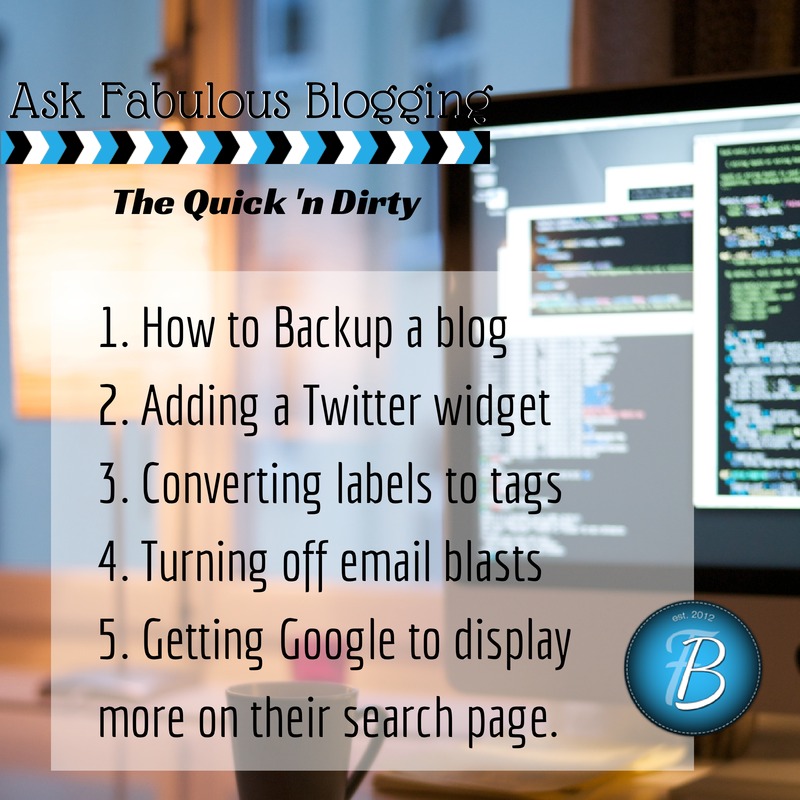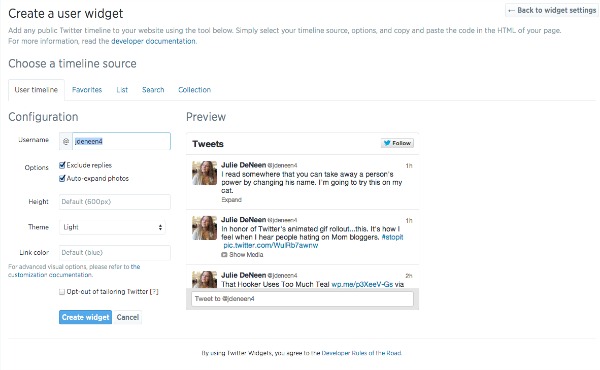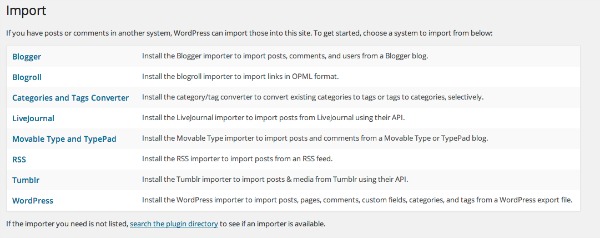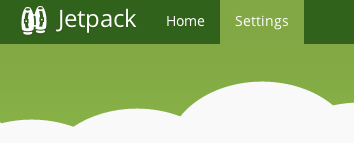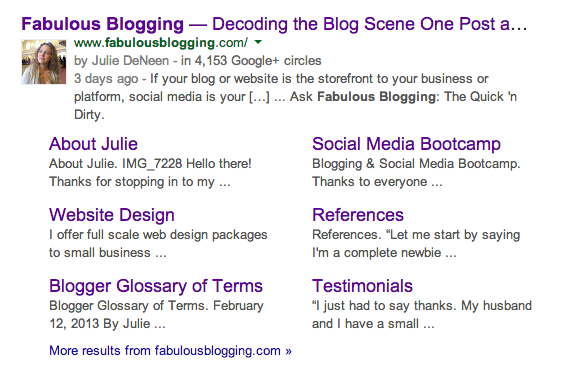As a blog designer and social media consultant, I receive a lot of questions in my email inbox. And you’d be surprised how many are repeats! So I thought I’d start a series where I compile them in a list with no frills answers.
Consider it a grab n go resource guide for you to pin whenever you get stuck! I’m hoping to do this regularly, so if you have a question you’ve never found a great answer to, send it my way at Julie@fabulousblogging.com.
1. How do I backup my blog?
First and foremost, you must decide how often you need to backup. If you only post once a week, once a week is fine. If you post every day and only back up once a week, just know that you could lose 7 days of content should it go down before your weekly scheduled backup. Only you can decide what’s a good routine for you, but you should always perform an additional backup whenever you install a new plugin or perform an update.
There are two main ways to backup your content — backing up the content only, and backing up the entire database.
To backup your content:
- Go to tools and export.
- Choose all.
- The file will download onto your computer.
- Save it on a hard drive or Google drive, etc.
This saves your content, comments, tags, and categories. In the event of a malware attack (and if all your backups are corrupt), you can use this file to repopulate your site.
To backup your database:
- Install a backup plugin.
- Schedule your backup.
- You’ll want to save a few copies on your server, and a few copies on another hard drive.
- You can easily do this by alternating where you save your backups.

2. How can I add a Twitter widget to my sidebar?
First, log into Twitter and click on the gear that is in the top righthand corner. Click Edit Profile. Then choose Widgets from the lefthand menu. Click on the button at the top of the screen that says Create New.
Once you have set your settings as you like, hit the blue create widget button. Copy the code that appears and paste it into a text html widget on your sidebar. To get to your widgets, you click on appearance > widgets in your WordPress dashboard. Find the widget that says “Text” and drag it over to your sidebar. It’ll pop open and you can paste in the code. Hit save.
3. How do I convert my Blogspot labels to tags after I move my blog to WordPress?
When you migrate from Blogspot to WordPress, all the labels automatically get converted to categories. The problem is that most people use labels more like tags, not categories, so you end up with 100’s of categories on WordPress that you don’t need.
To remedy this, click on tools > available tools in your WordPress dashboard. Choose the categories and tags converter.
Then you can choose which of your labels you want to keep as categories and which you want converted to tags. If you have a label with a lot of posts attached, you can keep it as a category and change its name later by clicking on Posts > Categories.
4. How do I turn off my automatic email blasts temporarily?
The Jetpack plugin is a common plugin for bloggers on self-hosted WordPress and the email subscription widget that comes with it is very handy. The problem is that when you hit publish, an email goes out to all your subscribers. There isn’t a schedule setting. If you have a lot of posts that need to go out and you don’t want to flood your subscribers with emails, go into the Jetpack dashboard and temporarily deactivate that module. Your widget on the sidebar will disappear, but as soon as you reactivate it, you can put it back. Click on Jetpack > Settings and look for the module that says subscriptions.
5. How do I get Google to display more items on their search page?
I’ve had lots of people ask me how I get the search result for Fabulous Blogging to appear the way it does on Google. The links under the main one are called sitelinks, and the easy answer is that I have no control over this! Now, if you want your picture to show up, that is a simple fix, done by adding a link to your blog on your Google plus profile (in the link section of your profile) and then filling out your Google + information in your user profile on your WordPress site. Once you have both of those filled out, your picture will begin appearing.
The best thing I can tell you is to create relevant helpful content, label your pages with great descriptions, and keep the content up to date. Google decides what pages to display under the main one (based on relevancy to the search). Here’s the official Google document about sitelinks.
Don’t be afraid to send me an email with your questions! Please label it Quick ‘n Dirty in the subject line and send it to Julie@fabulousblogging.com. I’m working on a resource sheet with all the questions compiled and answered, so check it out!
